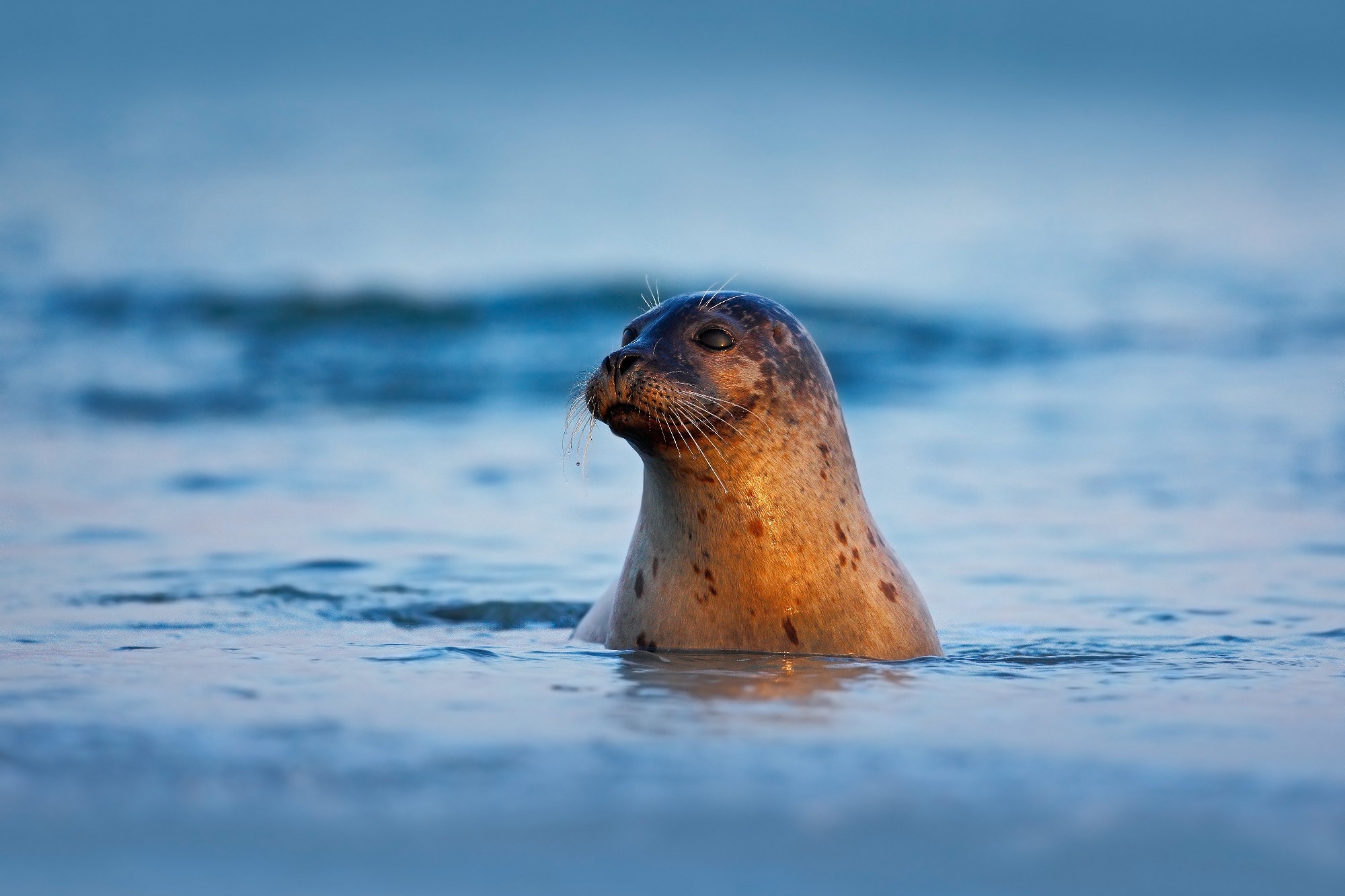A recent study published in the United States (U.S.) Centers for Disease Control and Prevention (CDC) journal Emerging Infectious Diseases reported the outbreak of the highly pathogenic hemagglutinin type 5 and neuraminidase type 1 (H5N1) avian influenza virus among New England gray and harbor seals in the United States (U.S.).
 Dispatch: Highly Pathogenic Avian Influenza A(H5N1) Virus Outbreak in New England Seals, United States. Image Credit: Ondrej Prosicky / Shutterstock
Dispatch: Highly Pathogenic Avian Influenza A(H5N1) Virus Outbreak in New England Seals, United States. Image Credit: Ondrej Prosicky / Shutterstock
Background
The highly pathogenic avian influenza (HPAI) viruses pose a significant threat to wildlife conservation and have the potential to cause a pandemic with serious socioeconomic impacts. The outbreak of the H5N1 virus belonging to clade 2.3.4.4b has resulted in over 70 million deaths of domesticated birds and is believed to have caused over a hundred infections in mesocarnivore wild species such as red foxes, where the transmission has largely been attributed to the consumption of infected prey.
Phoca vitulina (harbor seals) and Halichoerus grypus (gray seals) have been known to be susceptible to influenza A infections, and previous outbreaks involved transmission from seal to seal without an intermediate avian host. These outbreaks indicate a potential route of viral adaptation to mammalian hosts and have considerable implications for human health.
About the study
In the present study, the researchers reported an event of unusual seal mortality among gray and harbor seals in New England. As part of the H5N1 surveillance among wild birds in the U.S., wildlife clinic personnel in Massachusetts have been collecting oropharyngeal and cloacal samples from wild birds since January 2022. Opportunistic sampling was also carried out in breeding colonies of seabirds from Massachusetts and Maine and between January and July 2022 on stranded seals from Maine to Virginia.
An increase in seal strandings during the second wave of infections in avian species led to the declaration of an unusual seal mortality event by the National Oceanic and Atmospheric Administration, beginning in June 2022. These strandings included 11 gray seals and 164 harbor seals, and samples were collected from 35 of those harbor seals and six gray seals.
Swab samples were analyzed for influenza A viruses, and the viral genomes were sequenced. In addition, a maximum likelihood phylogenetic analysis was also performed for the sequences H5N1 genomes and other closely related viral sequences.
Results
The results of the swam sample analyses revealed that 17 of the harbor seal samples and two of the six gray seal samples were positive for the highly pathogenic H5N1 avian influenza virus, and the samples were found in regions with suspected H5N1 outbreaks among seabird species such as cormorants, eiders, terns, and gulls. In some cases, the seals exhibited respiratory symptoms, with neurologic symptoms present in a subset of these.
The genome sequencing produced 13 viral genomes from the seal swabs and 71 viral genomes from the avian swab samples. The phylogenetic analysis revealed that the sequences formed four clusters, with two of the clusters being unique to the New England region and spanning the first and second waves of the viral outbreak. Analysis of the single-nucleotide polymorphisms and amino acid mutations revealed that the sequences collected during the second wave all shared new mutations. Additionally, this New England cluster contained sequences from various species, including seals, raptors, eiders, gulls, and geese.
The sequence analysis also revealed that there had been more than two spillover events from birds to seals during the second wave of the H5N1 infections. Of the 13 seal-derived viral sequences, 11 were in the second wave cluster. Furthermore, the second wave cluster sequences had four amino acid changes (one each in polymerase acidic protein, polymerase acidic X protein, hemagglutinin protein, and nonstructural 1 protein) that were distinct from the H5N1 sequences from the first wave.
Conclusions
Overall, the results indicated that the outbreak of H5N1 among the seal species P. vitulina and H. grypus occurred due to more than two spillover events from wild birds, most likely due to the transmission of shed viruses through the shared environment since these birds are not the regular prey of these seals. Since influenza A outbreaks in the wild cannot be managed through depopulation or other measures and mobile and large marine mammals such as seals can transmit the infection across and within species, it is essential to monitor the transmission of influenza A virus in the coastal interface where marine birds and mammals interact.